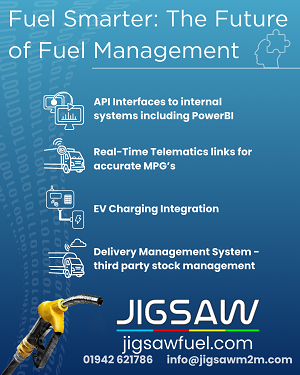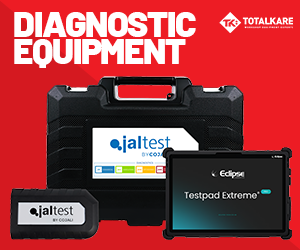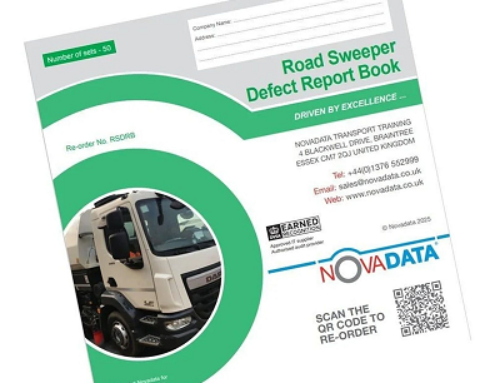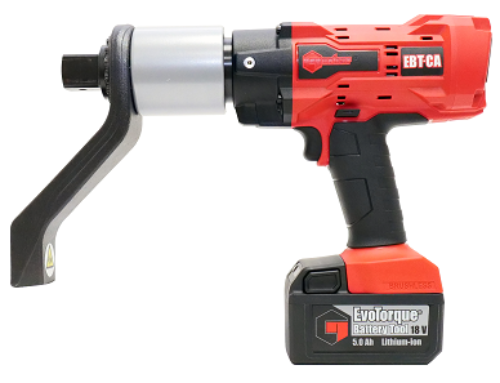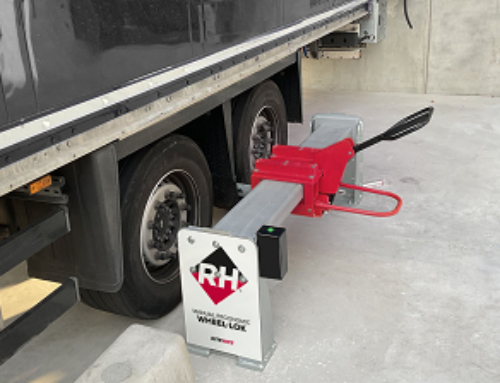AC innovations for electric vehicles
Ian Saunders, vehicle and specialist applications sales manager at Fischer Panda UK | Power Solutions, discusses the optimisation of HVAC solutions for electric commercial applications
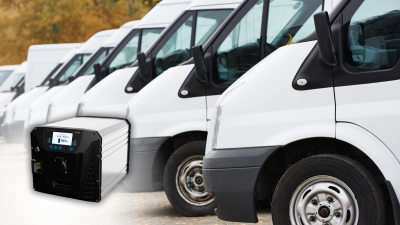 As the transition to electric vehicles (EVs) continues to gain momentum, operators and fleet managers and alike are facing new challenges in ensuring their vehicles maintain optimal performance and comfort.
As the transition to electric vehicles (EVs) continues to gain momentum, operators and fleet managers and alike are facing new challenges in ensuring their vehicles maintain optimal performance and comfort.
An area that is often raising questions is the integration of heating, ventilation, and air conditioning (HVAC) systems into electrified fleets.
HVAC systems, especially air conditioning, require a significant amount of energy, and unfortunately, the current power systems of electric vehicles simply aren’t designed to support these systems without significant compromises.
Commercial EVs face several challenges when integrating air conditioning (AC) systems. These challenges primarily revolve around energy consumption, efficiency, and performance trade-offs.
The power challenge
Air conditioning and climate control systems are high energy consumption systems, and while EVs offer numerous advantages over traditional internal combustion engine vehicles, they come with certain limitations when it comes to auxiliary power.
Standard electric vehicles can provide up to 1 kW of power, while HVAC systems typically require 230V or around 3 kW to operate effectively. This gap in available power means that many electric vehicles on the market today simply can’t run HVAC systems at full capacity without draining the battery too quickly, reducing the vehicle’s range or efficiency.
It also forces operators to limit the use of climate control systems, which is not an acceptable option in many environments, particularly in extreme temperatures. During extreme weather (hot summers or cold winters), the AC or heating load can reduce EV range by 20-50 per cent.
Furthermore, unlike internal combustion engine vehicles, EVs do not have excess engine heat that can be used for heating, requiring more electrical power for climate control.
Optimised climate control system design
Traditional air conditioning systems lack optimised cooling solutions which can significantly minimise energy loss. Such strategies can include cabin pre-conditioning, zoned cooling, using waste heat from electrical components, better insulation, and thermal management.
Furthermore, many EVs use heat pumps instead of resistive heaters for improved efficiency. However, in extremely cold temperatures, heat pumps become less effective.
Additional heating solutions, such as PTC (Positive Temperature Coefficient) heaters, consume significant power and further reduce range, most PTC heaters at 12v only go up to 900W.
Weight is a common concern among anyone with longer operating hours and ranges, as it can have a significant impact on the EV’s electricity consumption.
Commercial EVs already require large battery packs, leaving limited space and weight capacity for additional HVAC systems. More efficient, lightweight, and compact AC units are needed to balance performance and energy efficiency.
Customised power solutions
The key to solving these problems lies in bespoke solutions that optimise energy usage while providing reliable climate control. Utilising a power source, independent from the main vehicle engine, and intelligently integrating it with the vehicle’s HVAC systems is a preferred choice for many fleet managers.
The only solution until recently has been additional batteries, inverters / chargers and complicated wiring systems all this and delivering less than 900W of heating alone.
Some manufacturers even opted for fitting an additional diesel tank for a 2kW air heater on an EV. This practice is counterproductive, causing extra fuel costs, and inefficient for vehicles traveling into ULEZ zones, where engine idling is not allowed.
Fischer Panda UK | Power Solutions is an installer of highly renowned and reliable equipment, who works with customers and partners to provide the optimal hybrid solution to the UK specialist vehicle market.
The experienced team of engineers would recommend a powerful zero-emission power management system, such as solar cells utilising the empty rooftop, and connected with the all-in-one Clayton Power, or Mastervolt power electronics which designed to provide scalable and integrated power solutions, ensuring that HVAC systems can run efficiently without overburdening the vehicle’s battery.
The Clayton compact lithium battery-based power system offers an all-in-one system is a standout example of this kind of solution.
Capable of delivering up to 3 kW of power with a 5kW peak and 160Ah battery, this unit allows operators to run HVAC systems, offering uninterrupted climate control without placing undue strain on the vehicle’s power supply. This means vehicles can maintain comfort levels without compromising operational efficiency.
Similarly, Mastervolt’s power systems can be tailored to integrate with HVAC units, allowing for a balanced power distribution that keeps your vehicle performing optimally. By distributing power efficiently, operators can reduce the risk of battery drain while ensuring that their HVAC systems work as they should, even in larger or more demanding vehicles.
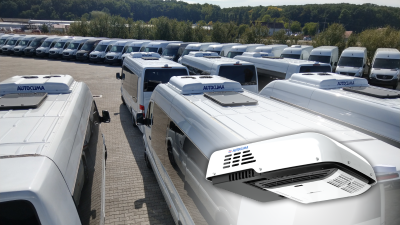 Integration with HVAC: Autoclima and Eberspächer
Integration with HVAC: Autoclima and Eberspächer
To further enhance vehicle performance, Fischer Panda UK | Power Solutions’ team will work together with customers to create bespoke result-driven solutions. Their power solutions are fully compatible with advanced Autoclima and Eberspächer HVAC systems.
Both brands are leaders in vehicle climate control, offering robust, energy-efficient solutions that are designed to work seamlessly with electric vehicles.
Autoclima’s air conditioning systems, for instance, are built to operate within the power constraints of electric vehicles. They are designed to provide maximum comfort with minimal energy consumption, ensuring that the vehicle’s power system isn’t overloaded.
Likewise, Eberspächer climate control systems are renowned for their durability and energy efficiency. When combined with power systems, operators can be confident that their EVs will stay at the right temperature, whether they’re operating in freezing temperatures or during the summer heat. Additionally, the new alternative air 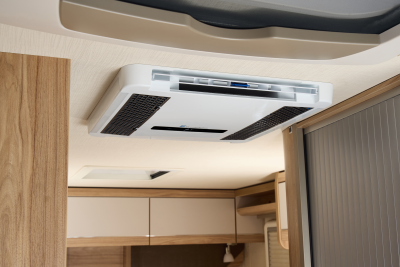 distribution system offers channelling cool and warm air into additional areas of the vehicle.
distribution system offers channelling cool and warm air into additional areas of the vehicle.
As an example, the Eberspächer Breezonic HP+ Rooftop model and the LPSII 3kW from Clayton power connected provide both continuous heating or cooling options during driving. It will work off grid for up 3.5 hours in full cooling or heating modes and up to 6 hours in Eco / night modes.
The Eberspächer Breezonic HP+ has a cooling capacity up to 3.6kW and a heat pump function up to 3.5kW. The LPS II 3000W has a built-in: 2 kWh Lithium-Ion Battery, 240V Pure Sine Wave Inverter, Booster (recharge from the alternator), 400W MPPT Charge Controller (recharge from solar panels), Intelligent charger (recharge from mains), built in Residual Current with Over Current protection.
For those who might need extra capacity or range, the LPS II can also be modified with an extension battery, providing a cost-efficient solution to extended power requirements.
Conclusion: the future of HVAC in electric vehicles
As the electrification of commercial vehicles accelerates, operators will need to ensure that HVAC systems remain fully functional without draining the vehicle’s battery life. A combination of efficient power systems and climate control solutions will be crucial to the success of electric fleets.
Fischer Panda UK | Power Solutions have a solid engineering background with over 100 years of combined engineering experience and are dedicated to empowering operators and fleet managers with the tools and knowledge needed to ensure that their vehicles remain comfortable, reliable, and operational.
Their bespoke solutions, such as the Clayton All-in-One, Mastervolt power systems, and industry-leading climate control systems from Autoclima and Eberspächer, are designed to help operators optimise their electric vehicle fleets for comfort, efficiency and reliability.
By addressing the power challenges and integrating reliable climate control systems, operators can improve vehicle performance, reduce downtime, and ensure that their fleets are ready for the future.
More information is available at the website, or at stand 5E106 at the upcoming Commercial Vehicle Show.





